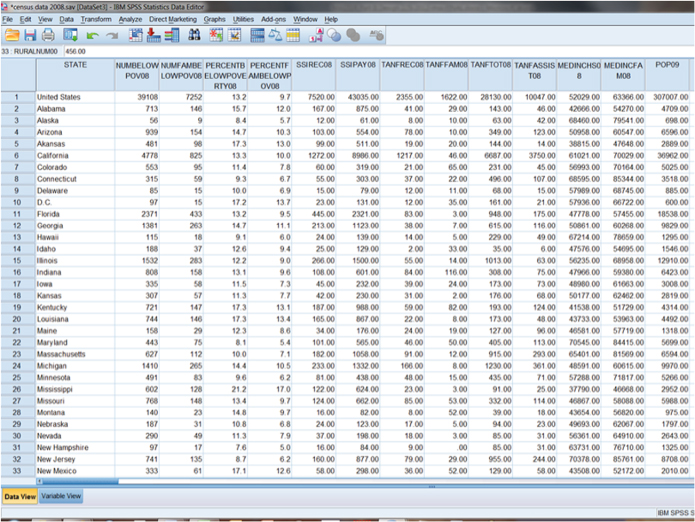13
AGGREGATE RESEARCH
Sometimes individual-level data are not appropriate for answering research questions; we need data from aggregates, or units that are composed of many individuals, such as cities, states, nations, schools, clubs, or churches. Each of these units (states, clubs) is composed of hundreds, if not thousands, of individuals. Aggregate-level data, as opposed to survey-level data, relies on a smaller number of cases, but each case is made up of thousands of smaller units. Say, for example, you had a data set made up of variables collected by the U.S. Census Bureau that reported data on the 50 states. How many cases would the data set have? The cases, or units of analysis, would be each individual state, so there would be 50 cases where each one case is composed of millions of individual units (people). The SPSS screen shown in Figure 13.1 is an example of an aggregate database in which there are many variables for each state (cases).
Figure 13.1. Aggregate-level data in data view.

Apart from census data, another example of aggregate data would comprise variables taken from a congregation, where variables may include total number of members, number of baptisms, number of deaths, value of churches/equipment/property, or debt on buildings/property. These examples of aggregate data stand in stark contrast to the data collected for the General Social Survey (GSS) 2010. ...
Get Understanding and Applying Research Design now with the O’Reilly learning platform.
O’Reilly members experience books, live events, courses curated by job role, and more from O’Reilly and nearly 200 top publishers.

